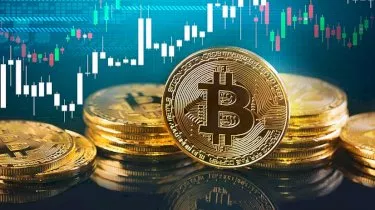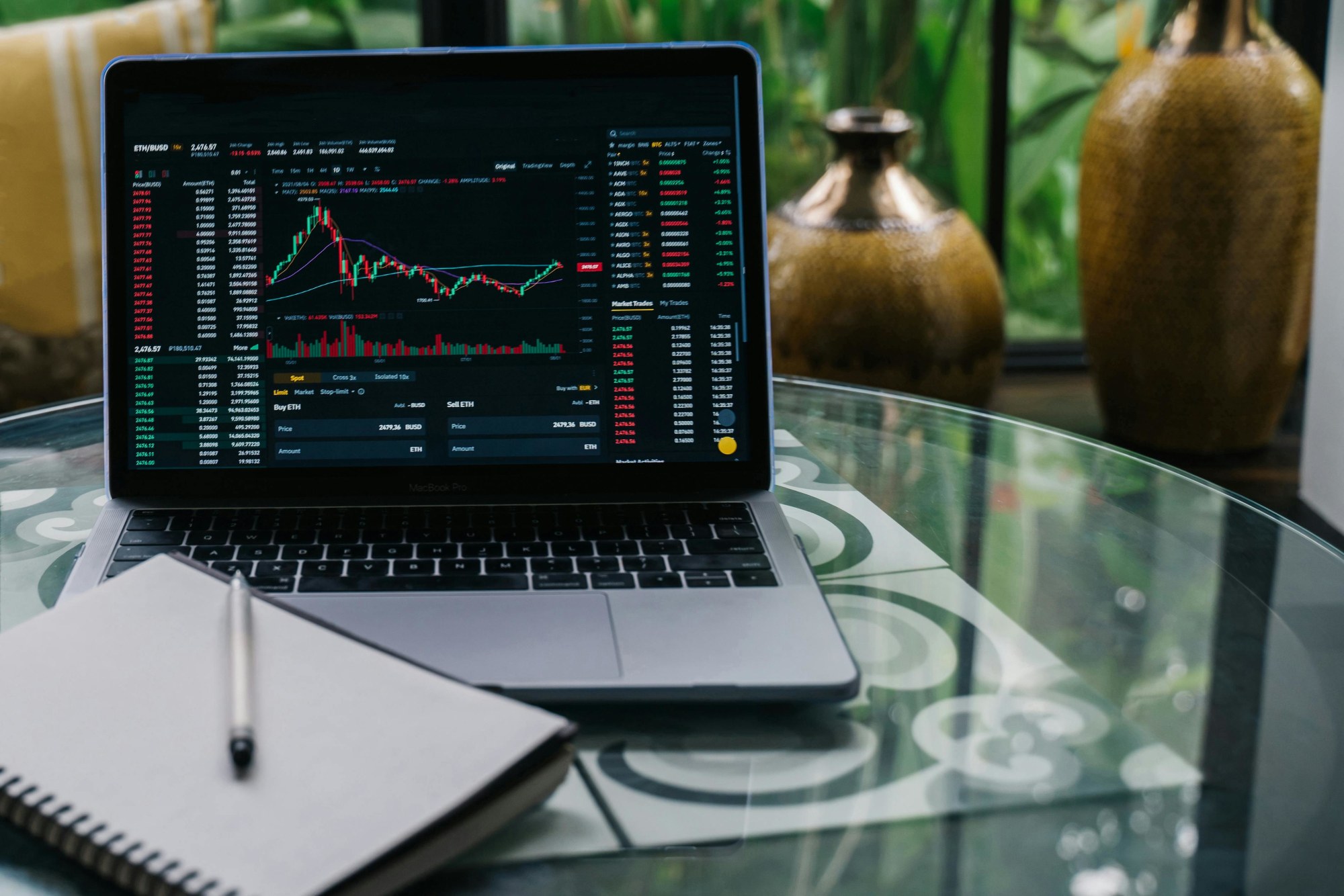Invest
Why you should beware of the gamification of crypto
Critics suggest that the ease with which apps like Binance allow consumers to invest in cryptocurrency might border on predatory.
Why you should beware of the gamification of crypto
Critics suggest that the ease with which apps like Binance allow consumers to invest in cryptocurrency might border on predatory.

As cryptocurrencies like bitcoin have grown more valuable and the surrounding conversation has grown louder, the market has been flooded with applications and websites designed to make investing in the crypto market more accessible to everyday consumers.
However, the line between accessibility and gamification can sometimes be blurry. Combined with the high-risk, speculative nature of crypto assets, these apps can sometimes leave everyday investors exposed in a way they might not realise.
Speaking to nestegg, Macquarie University’s lecturer in digital culture, Dr Rowan Tulloch, said, “Gamified apps, which aim to give the user a sense of excitement and immediacy when investing, are best suited to highly volatile assets: crypto being a great example of this.”
“Tracking and graphing the rise and fall of the asset, and offering immediate buy-in, fits with that game-like feel these apps go for. Less volatile, consistently performing assets obviously are less suited to this type of process.”

An associate professor of finance at Macquarie University, Sean Foley said that “crypto is totally being gamified”.
“The whole crypto space is a bit irreverent, you know?”
“With CryptoKitties or CryptoPunks or Shiba Inu coin or Dogecoin, a lot of it is just sort of doing something different or sticking it to the traditional financial system. It’s come from that sort of ilk or that genre, and a lot of that’s been picked up in the trading platforms that we have now.”
Mr Foley alerted to the big difference between spot crypto exchanges like BTC Market, which aren’t “particularly gamified”, and international crypto exchanges like Binance, which offer combined gamification with perpetual futures.
Mr Foley said that even the look of platforms like Binance is designed to trap potential repeat customers.
“It’s flashing red, green, red, green whenever something goes up or down and giving you all these like moving average trend lines to help people figure out their technical charting, which has been persistently shown to not work at all.”
Comparing crypto apps that gamify perpetual futures to CFD (contract for difference) traders, Mr Foley warned against unrealistic expectations.
“I think with things like GameStop, you know, we’ve started to see a generation of traders who really are looking for assets that can turn $10,000 into a house deposit overnight,” Mr Foley said.
“If you’re buying something like ethereum or bitcoin, at the end of the day, you’ll still have an asset like you might buy it for $100,000. If it goes to $20,000, hey, you’ve still got $20,000.
“Whereas Binance and other places, Bitmex, Coinbase and these kinds of guys, what they’ve done is to create big leveraged products that look a lot like what CFDs were, and have a lot of the problems that CFDs had.”
In practice, what these crypto exchanges offer isn’t all that different to the way that practices like ‘shorting’ work in the stock market. Investors are able to speculate on whether the price of bitcoin will go up or down at a fraction of what it would cost to buy low and sell high via a traditional spot exchange.
The higher level of risk involved with this sort of speculation can yield lucrative returns, but the potential for losses is also multiplied.
“The thing is, the value of bitcoin goes down by even 0.01 per cent, then you’ve lost your dollar. The exchange has effectively kept it,” he said.
Thankfully, Mr Foley said that “regulators globally are really starting to understand what’s happening in this space and get their head around, you know, not just bitcoin and ethereum but decentralised finance and yield farming and, you know, uni swap and automated market makers and all sorts of stuff like.
“There’s no need to say, ‘Well look, it’s not that we can’t regulate it because there are intersections between the fiat on-ramps’ and regular people. All of this money has to come from somewhere, and it comes from investors.”
About the author

About the author


Cryptocurrency
Australian investors embrace crypto as a core growth strategy
In a significant shift within the investment landscape, cryptocurrency has emerged as a key component of portfolio diversification and long-term wealth creation for Australian investorsRead more

Cryptocurrency
Ethereum and Niche Tokens Give Australia a Unique Edge: Kraken’s 2025 Wallet Analysis
Kraken, a prominent and secure global cryptocurrency platform, has unveiled a comprehensive analysis of millions of wallets from its Australian clientele, showcasing unique trends in crypto asset ...Read more

Cryptocurrency
Gemini strengthens Australian presence with new leadership and AUSTRAC registration
In a significant move to bolster its presence in the Asia-Pacific region, global cryptocurrency platform Gemini has announced a strategic expansion in Australia. This development includes the ...Read more

Cryptocurrency
Asset managers eye $235bn tokenisation opportunity as TradFi and DeFi converge
In a striking revelation, a global survey conducted by Calastone has unveiled a $235 billion opportunity for tokenised funds, highlighting a significant convergence between traditional finance ...Read more

Cryptocurrency
Big four bank pilots crypto‑backed mortgages: what it means for lenders, borrowers and the market
An Australian big four bank is trialling home loans secured by units in a regulated Bitcoin ETF — a cautious bridge between digital assets and traditional credit. If executed well, the model could ...Read more

Cryptocurrency
Webull launches cryptocurrency trading for Australian investors
Webull Securities Australia Pty Ltd, a subsidiary of Webull Corporation, has unveiled its cryptocurrency trading platform for Australian users, marking a significant expansion in the company’s ...Read more

Cryptocurrency
OKX launches automated trading bots for Australian crypto traders
Cryptocurrency platform OKX Australia has introduced two automated trading bots aimed at helping local traders manage their digital asset portfolios around the clock. Read more

Cryptocurrency
New survey reveals high crypto adoption in Australia amid housing affordability concerns
A new survey by Protocol Theory, in partnership with cryptocurrency exchange Easy Crypto, has found that nearly 50% of Australians have bought or are considering buying cryptocurrency in the next ...Read more

Cryptocurrency
Australian investors embrace crypto as a core growth strategy
In a significant shift within the investment landscape, cryptocurrency has emerged as a key component of portfolio diversification and long-term wealth creation for Australian investorsRead more

Cryptocurrency
Ethereum and Niche Tokens Give Australia a Unique Edge: Kraken’s 2025 Wallet Analysis
Kraken, a prominent and secure global cryptocurrency platform, has unveiled a comprehensive analysis of millions of wallets from its Australian clientele, showcasing unique trends in crypto asset ...Read more

Cryptocurrency
Gemini strengthens Australian presence with new leadership and AUSTRAC registration
In a significant move to bolster its presence in the Asia-Pacific region, global cryptocurrency platform Gemini has announced a strategic expansion in Australia. This development includes the ...Read more

Cryptocurrency
Asset managers eye $235bn tokenisation opportunity as TradFi and DeFi converge
In a striking revelation, a global survey conducted by Calastone has unveiled a $235 billion opportunity for tokenised funds, highlighting a significant convergence between traditional finance ...Read more

Cryptocurrency
Big four bank pilots crypto‑backed mortgages: what it means for lenders, borrowers and the market
An Australian big four bank is trialling home loans secured by units in a regulated Bitcoin ETF — a cautious bridge between digital assets and traditional credit. If executed well, the model could ...Read more

Cryptocurrency
Webull launches cryptocurrency trading for Australian investors
Webull Securities Australia Pty Ltd, a subsidiary of Webull Corporation, has unveiled its cryptocurrency trading platform for Australian users, marking a significant expansion in the company’s ...Read more

Cryptocurrency
OKX launches automated trading bots for Australian crypto traders
Cryptocurrency platform OKX Australia has introduced two automated trading bots aimed at helping local traders manage their digital asset portfolios around the clock. Read more

Cryptocurrency
New survey reveals high crypto adoption in Australia amid housing affordability concerns
A new survey by Protocol Theory, in partnership with cryptocurrency exchange Easy Crypto, has found that nearly 50% of Australians have bought or are considering buying cryptocurrency in the next ...Read more








